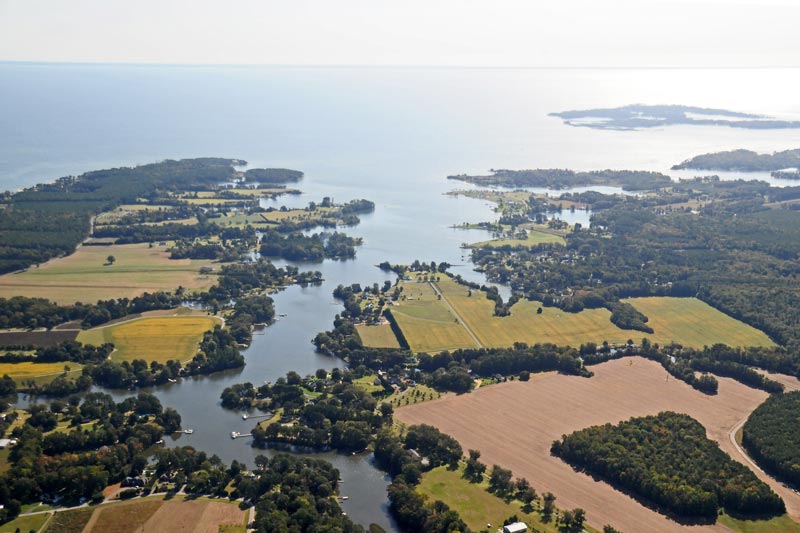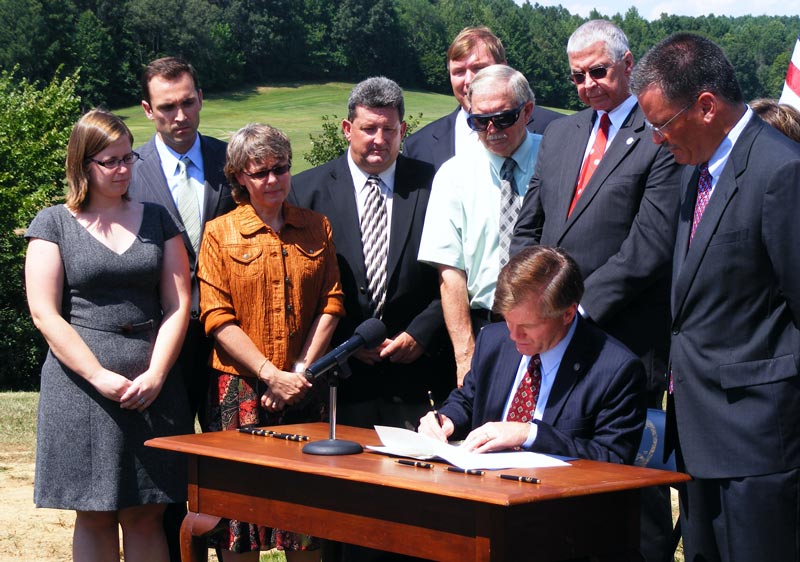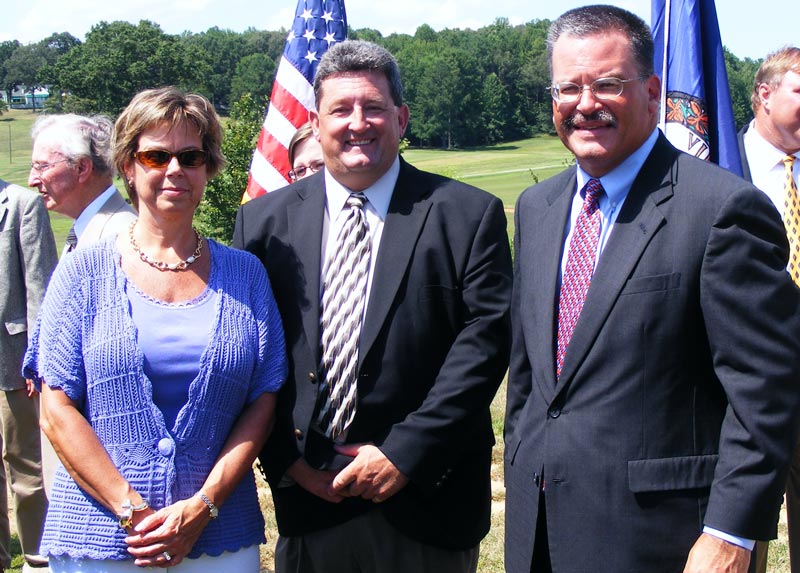
Approximately 51 billion gallons of water flow into the Chesapeake Bay each day from its freshwater tributaries. Shown is Dymer Creek, located along the bay in Virginia’s Northern Neck region. Photo by David Broad/Creative Commons
For years, the Chesapeake Bay watershed has been undergoing a major cleanup initiative, and the Virginia GCSA has been a highly engaged participant. Through the chapter’s publication of Environmental Best Management Practices for Virginia’s Golf Courses and the state’s golf course superintendents’ commitment to nutrient management planning, the VGCSA has been a model of environmental stewardship for the Commonwealth of Virginia.
Virginia Gov. Ralph Northam recently recognized the state’s golf industry for its years of work to ensure the protection of the Chesapeake Bay watershed. The governor’s most recent report on the Chesapeake Bay watershed states:
“DCR (Department of Conservation and Recreation) would like to acknowledge the initiative taken by members of the golf turf industry to meet the highest environmental protection standards. In addition to the certified planners, superintendents and golf course managers, DCR also recognizes the supporting efforts of Virginia Tech, Virginia Cooperative Extension, the Virginia Golf Course Superintendents Association, the Virginia Turfgrass Council, Virginia Agribusiness Council and the national Golf Course Superintendents Association of America. Success was made possible by all parties involved demonstrating their commitment to protect the environment through sound nutrient management practices.”
The Chesapeake Bay is the largest estuary in the United States and the third largest in the world. The Chesapeake Bay watershed covers about 64,000 square miles and encompasses parts of six states (Delaware, Maryland, New York, Pennsylvania, Virginia and West Virginia) and Washington, D.C. The Chesapeake Bay supports more than 3,600 species of plant and animal life and produces more than 500 million pounds of seafood harvest each year. It’s no wonder, then, that preserving the health of this ecosystem is a high priority, both for the sake of the environment and for the 18 million people who live, work and play within its bounds.
A little history. In 2011, the VGCSA began working with Virginia’s Department of Conservation and Recreation to ensure that at least 99% of the 326 golf courses in the commonwealth obtained a nutrient management plan or were contracted with a certified planner by 2017. In total, that accounts for more than 28,000 acres of land under nutrient management, and it helps Virginia meet its water quality goals.
The VGCSA took the lead in getting the state organized to commit to 100% compliance of certified nutrient management plans by all golf courses. Next, the VGCSA found a bill sponsor to develop and get across the finish line legislation to codify its commitment to water quality protection. Next, the chapter worked with state lawmakers, the Virginia Agribusiness Council, and the Virginia Department of Conservation and Recreation to secure general funds in the state budget to help golf courses offset the costs of certified nutrient management plans — an annual allocation of $100,000. Last, the VGCSA remained vigilant when it came to meeting its 2017 compliance goal.

Former Virginia Gov. Bob McDonnell signing Virginia HB 1831 in August 2011. The bill required golf courses to implement nutrient management plans by July 1, 2017.

From left: Donna Johnson, former president of Virginia Agribusiness Council; Peter McDonough, golf course superintendent; and Ed Scott, former Virginia House delegate, who sponsored HB 1831. Photos by David Norman
Virginia serves as a model for other states that may be confronted with water quality challenges. Peter McDonough, superintendent at Keswick Golf Club near Charlottesville, Va., and a 29-year GCSAA member, helped spearhead the decades-long effort and offers the following lessons:
- Partner with and understand other natural resource users. How can you work together to successfully clean up your watershed? It’s not a good idea to throw anyone under the bus.
- Build relationships with state agriculture and natural resource committees and chairs. There is no such thing as a golf course committee in the general assembly or senate. Therefore, these are the people who will affect golf’s livelihood.
- Own your goal. All five GCSAA chapters in Virginia took ownership in their own backyard to reach this milestone.
- Golf course superintendents have a responsibility to golfers. In Virginia, now that golf courses have in place nutrient management plans written by state-certified nutrient management planners, golfers can easily answer questions from concerned citizens should fingers get pointed at golf facilities.
McDonough, who was the recipient of GCSAA’s President’s Award for Environmental Stewardship in 2016, reminds us that our global population is growing and that competition for natural resources will continue to be a challenge. Let’s make sure golf is being transparent and demonstrating that we are using our natural resources to the best of our ability.
When you face scrutiny for natural resource use, how are you going to be able to clarify what it is you do?
“Get off the page,” advises McDonough. “In Virginia, we have clearly laid out here what we are doing and why. I believe we are the best natural resource user around.”
Job well done, VGCSA!
Chase Rogan is the GCSAA field staff representative for the Mid-Atlantic region, and Chava McKeel is GCSAA’s director of government affairs.